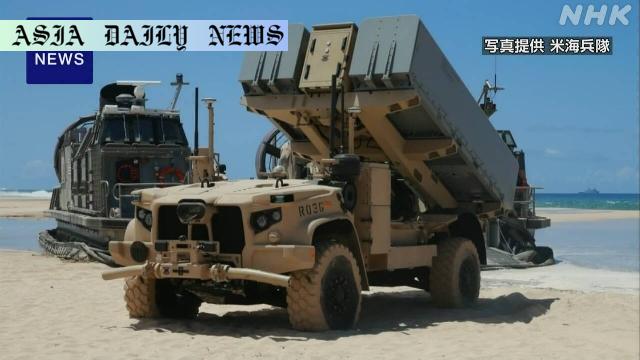Japan-US Training – The Resolute Dragon exercise aims to strengthen coordination amidst growing regional tensions.
- Japan and the US plan a large-scale military exercise named Resolute Dragon in September.
- It will involve over 12,000 Japanese and 1,900 US personnel across key locations.
- Advanced missile systems like NMESIS could be deployed, sparking local protests.

Introduction: Japan-US Military Collaboration
Japan’s Ground Self-Defense Force recently announced one of the most significant joint military engagements with the United States – the Resolute Dragon field exercise. Scheduled from September 11 to 25, this large-scale training operation will aim to bolster defense coordination for Japan’s remote islands. Both countries are intensifying their defense measures amidst rising military activity in the region, particularly from China. This initiative demonstrates an unwavering alliance between Japan and the US, fostering military readiness coupled with strategic deterrence.
Resolute Dragon: Scale and Significance
The Resolute Dragon training showcases an unparalleled level of international collaboration, with over 12,000 personnel from Japan’s Ground, Maritime, and Air Self-Defense Forces joining forces with 1,900 US personnel, including the Marine Corps and other units. The exercises will span critical geographical locations such as the Kyushu region, Okinawa Prefecture, northern Hokkaido, and Ioto, historically known as Iwojima. These areas are strategically vital for regional security and defense objectives. Training activities will involve complex maneuvers, live-fire drills, and the integration of advanced technologies.
NMESIS: A Leap in Missile Defense
A pivotal feature of this year’s exercise is the potential deployment of the US military’s NMESIS (Navy Marine Expeditionary Ship Interdiction System) anti-ship missile system at Camp Ishigaki in Okinawa Prefecture. This advanced system highlights technological innovations aimed at securing Japan’s maritime borders. The deployment reflects a response to China’s aggressive maneuvers in surrounding waters, signaling a significant shift in military preparedness. While the advanced system could fortify defensive capabilities, it also poses a political challenge, as local communities may voice dissent against further militarization in their area.
Regional Tensions and Strategic Deterrence
China’s growing military activities in the East and South China Seas have created an atmosphere of uncertainty and heightened the urgency for alliances such as the one forged between Japan and the US. By conducting joint military exercises, these nations aim to project a unified stance against potential threats to their sovereignty and regional stability. Beyond training, the exercises underscore a robust commitment to collaborative geostrategic planning. As tensions intensify in the Indo-Pacific region, such maneuvers signify a reinforced determination to uphold international rules-based order.
Local Opposition and the Balancing Act
The announcement of NMESIS deployment has not gone unnoticed by local communities, especially in Okinawa, which already hosts a significant US military presence. Concerns regarding safety, noise disturbances, and environmental impact are likely to fuel protests. Moreover, historical grievances tied to Okinawa’s strategic importance amplify local opposition to further militarization. Balancing the strategic benefits of these exercises with local concerns will pose a delicate challenge for policymakers in both nations.
Long-Term Implications for Japan-US Relations
Resolute Dragon represents a concrete manifestation of the evolving security partnership between Japan and the United States. Through joint training and knowledge-sharing, both nations prepare for potential contingencies while reinforcing mutual trust. This collaboration also sends a message to other regional players that Japan and the US remain steadfast in their commitment to collective defense. While local protests will warrant careful navigation, the exercise ultimately reaffirms the strategic value of their alliance in addressing shared security concerns.



Commentary
The Significance of Enhanced Military Training
The upcoming Resolute Dragon exercise between Japan and the United States is a highly significant military endeavor that reflects the evolving regional dynamics in East Asia. At its core, it highlights the strategic imperatives of alliance-building in a time of heightened geopolitical tension. As military exercises of this scale are rare, their scope signals heightened readiness amidst unsteady waters in the Indo-Pacific. The participation of 12,000 Japanese personnel alongside 1,900 US military members elevates the maneuvers into a symbol of shared commitment to regional security.
Balancing Defense and Public Sentiment
One of the more contentious aspects of the exercise is the deployment of the NMESIS missile system. While undeniably a technological leap in military capability, it also stirs concerns among local residents regarding increased military footprint and potential disruptions. Okinawa, already burdened with a significant US military presence, has often been vocal about these issues. It will be interesting to observe how the governments of both nations address these genuine concerns while maintaining the focus on strategic imperatives.
Strategic Unity Amid Regional Tensions
This training not only reiterates Japan and the US’s defensive partnership but also hints at broader regional strategies designed to counterbalance China’s growing assertiveness. By testing and deploying advanced weaponry like the NMESIS, these allies are doubling down on deterrence mechanisms. Furthermore, the exercise stands as a resolute declaration to uphold freedom and stability in one of the world’s most critical waterways, embodying unity against common challenges.
A Delicate Yet Necessary Push Forward
While Resolute Dragon may be necessary for Japan’s security and for preserving peace in the region, there is no escaping the socio-political challenges tied to military build-ups. Addressing public opposition with transparency and sensitivity will be paramount in sustaining trust while fulfilling defense objectives. The upcoming exercise underscores the broader question of how nations navigate the dual imperatives of security and public accountability in times of change and uncertainty.